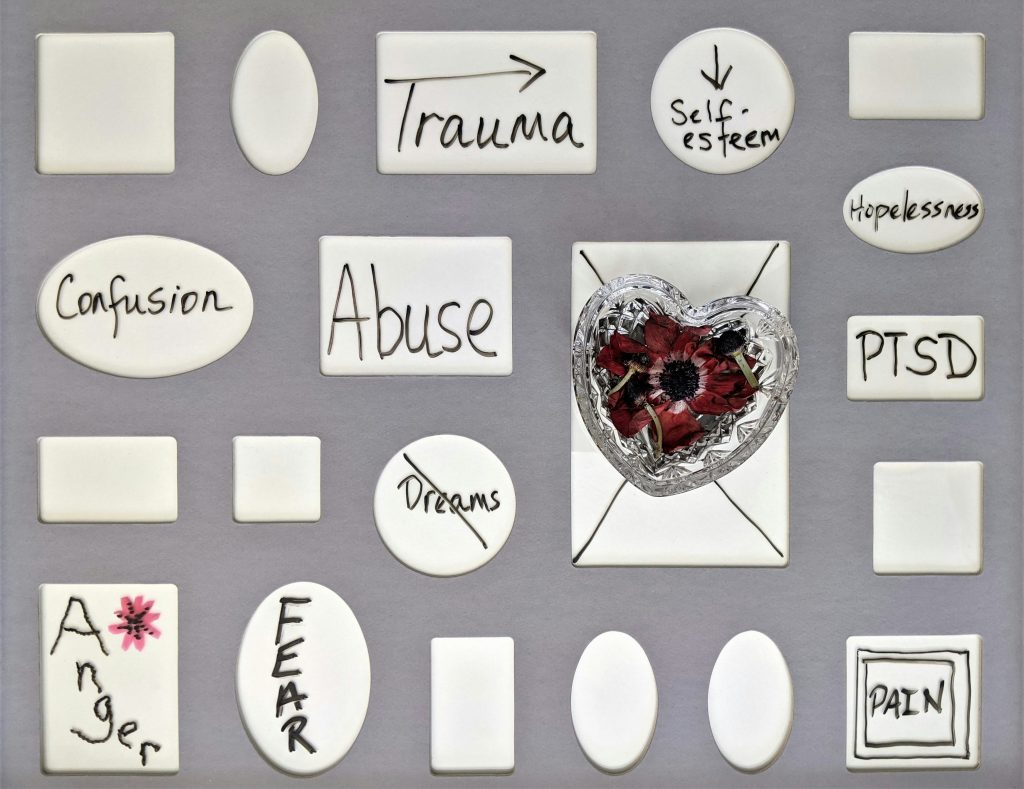When the time period childhood trauma is talked about, your thoughts might first flip to bodily or sexual abuse. Nonetheless, one other type of trauma usually ignored is neglect. Not like abuse, neglect isn’t a visual bodily act, which might make it simple to underestimate its dangerous affect. Neglect is outlined as a “basic and protracted failure of the caregiver in offering a toddler’s primary materials and/or psychological wants, limiting or impairing the sufficient improvement of a kid’s bodily and psychological well being” (Infurna et al., 2016).
Research have discovered that neglect is sort of widespread, although the estimations range significantly. For instance, the NSPCC roughly calculates that 1 in 10 kids have skilled neglect of their life (NSPCC, 2021), with the caveat that that is more likely to be an underestimation.
The affiliation between publicity to childhood traumatic occasions and the event of psychological sickness is now properly established with a number of research displaying that publicity to traumatic occasions will increase the probability of creating psychological sicknesses (McKay et al., 2021). Nonetheless, there are fewer research that discover the affect of neglect (Stickley et al., 2020).
To get a greater understanding of the prevalence of neglect in people recognized with a psychiatric dysfunction, Silva et al., (2024) performed a scientific evaluation. Their intention was to judge whether or not there are any vital variations within the prevalence of neglect between folks with the principle psychiatric diagnoses.

Is neglect extra widespread in some psychiatric problems in comparison with others?
Strategies
The authors searched three digital databases to establish quantitative papers that assessed the prevalence of childhood neglect trauma in adults with a recognized psychiatric dysfunction. The listing of psychiatric problems (recognized utilizing both the DSM-5 or ICD-11) which had been of curiosity to the evaluation had been: post-traumatic stress dysfunction (PTSD), anxiousness problems, obsessive-compulsive dysfunction (OCD), main depressive dysfunction (MDD), consuming problems (ED), bipolar dysfunction (BD), temper problems, schizophrenia (SCZ), schizophrenia spectrum problems, character problems (PD), and blended psychiatric problems.
Childhood neglect was additional divided into three classes:
unspecified neglect (Ne),
emotional neglect (EN), and
bodily neglect (PN).
Research had been excluded in the event that they weren’t revealed in English, had a pattern of kids/adolescents, had no legitimate evaluation, or had a pattern exterior of the focused diagnostic classes. Research had been screened and reviewed by at the very least two unbiased researchers at each stage of the screening course of.
Danger of bias was assessed utilizing the Joanna Briggs Institute (JBI) essential appraisal guidelines (Munn et al., 2014), a validated measurement to evaluate examine high quality. For the meta-analysis, a easy meta-regression mannequin was carried out.
Outcomes
122 research had been included within the meta-analysis with the bulk performed in Europe (42.6%). There have been a complete of 57,638 contributors throughout all of the research and the pooled age was 41 years. The commonest prognosis was Main Depressive Dysfunction (27.0%), adopted by Bipolar Dysfunction (14.8%), and Consuming Problems (12.3%). Most research reported knowledge on each emotional and bodily neglect (99/122). Round two thirds of research had a average threat of bias, whereas round a 3rd had a low threat of bias.
Unspecified neglect (Ne)
As there have been solely 15 research that investigated unspecified neglect, the findings weren’t as strong as the opposite two classes. Throughout the 15 research, the pooled prevalence charge was 46.6%. They discovered that there was no vital distinction between psychiatric diagnoses, though they did discover a decrease prevalence charge within the Main Depressive Dysfunction group in comparison with the opposite psychiatric diagnoses (listed in strategies). Ne was most prevalent within the PTSD group.
Emotional Neglect (En)
The pooled prevalence charge for emotional neglect was 43.1%. There was a considerably decrease prevalence of emotional neglect in contributors with Bipolar Dysfunction and Main Depressive Dysfunction in comparison with the opposite psychiatric diagnoses (listed in strategies). Much like unspecified neglect, the best charges of emotional neglect had been discovered within the PTSD group. Not like Ne, nonetheless, there have been additionally excessive charges within the OCD and ‘character dysfunction’ group.
Bodily Neglect (Pn)
Bodily neglect had the bottom prevalence charges of the three, at 34.8%. Equally to the opposite two forms of neglect, the Main Depressive Dysfunction and Bipolar Dysfunction group had the bottom prevalence degree of bodily neglect in comparison with the opposite psychiatric diagnoses (listed in strategies). In addition to the 2 teams, there have been additionally low prevalence ranges of bodily neglect for people with psychotic problems and consuming problems. The very best charges had been within the OCD, character dysfunction, and PTSD teams.

A minimum of a 3rd of contributors on this examine reported experiencing at the very least one sort of childhood neglect.
Conclusions
The meta-analysis sought to evaluate the prevalence charges of neglect maltreatment in a wide range of psychiatric problems. The primary discovering was a decrease prevalence of neglect in people recognized with bipolar dysfunction and main depressive dysfunction, and the next prevalence in these with PTSD, OCD, and character problems, although this was not confirmed by the meta-analysis.

This evaluation suggests that folks with a prognosis of PTSD, OCD or character problems have increased prevalence charges of neglect.
Strengths and limitations
Strengths:
The authors performed meta-regression fashions to find out the moderator impact for all variables, together with age, intercourse, place of recruitment, threat of bias, and 12 months of publication. Thus, they accounted for potential moderating results of demographic variables comparable to age and intercourse, with the fashions figuring out that there was no vital affect.
Limitations:
The authors didn’t embody measurements of inter-rater reliability. Whereas the screening course of appeared strong, a quantitative measurement of settlement would have been informative.
Solely research revealed in English had been included within the examine, which limits the findings. As the vast majority of the research had been performed in both Europe or North-America, together with research not initially revealed in English might have elevated the variety.
Though there have been a number of research which measured a number of forms of neglect, the outcomes for a number of neglect varieties was not reported. As mixed neglect experiences might have had a unique affect in comparison with remoted neglect experiences, this might have yielded attention-grabbing findings.

The evaluation didn’t discover research the place a number of forms of neglect had been skilled. This might have a considerably totally different affect to remoted neglect experiences.
Implications for apply
Total, the findings point out a comparatively excessive prevalence charge of childhood neglect throughout a wide range of psychiatric problems, with over a 3rd of people reporting at the very least one sort of neglect. This suggests that practitioners ought to think about the affect of neglect on an people’ presentation. Nonetheless, the charges might differ between diagnoses, with prevalence charges notably excessive for people with PTSD, character problems, and OCD, and notably low for people with main depressive dysfunction and bipolar dysfunction, although this distinction was not confirmed.
Moreover, the kind of neglect could also be essential, because the prevalence charge went as much as nearly 50% for unspecified neglect. This implies that practitioners might go additional and think about the various kinds of neglect. Nonetheless, there was excessive heterogeneity in research and extra analysis must be completed.
The systematic evaluation units up a great basis for additional analysis, as it’s the first of its variety to summarise and examine prevalence charges throughout a wide range of totally different psychiatric problems. Future analysis can construct on this, going into additional element on the distinction between diagnoses. This systematic evaluation didn’t intention to find out causal processes however did present that neglect is widespread. Future research ought to due to this fact discover the connection between childhood neglect and the event of particular psychiatric problems in additional element.

Childhood neglect is more likely to be an essential think about a person’s historical past of maltreatment and practitioners ought to bear this in thoughts.
Assertion of pursuits
None to declare.
Hyperlinks
Main paper
Silva, R., Oliva, F., Barlati, S., Perusi, G., Meattini, M., Dashi, E., Colombi, N., Vaona, A., Carletto, S. and Minelli, A. (2024). Childhood neglect, the uncared for trauma. A scientific evaluation and meta-analysis of its prevalence in psychiatric problems. Psychiatry Analysis, [online] 335, p.115881.
Different references
Carr, C.P., Maria, C., Stingel, A.M., Lemgruber, V.B. and Juruena, M.F. (2013). The Position of Early Life Stress in Grownup Psychiatric Problems. The Journal of Nervous and Psychological Illness, [online] 201(12), pp.1007–1020.
Infurna, M.R., Reichl, C., Parzer, P., Schimmenti, A., Bifulco, A. and Kaess, M. (2016). Associations between despair and particular childhood experiences of abuse and neglect: A meta-analysis. Journal of Affective Problems, [online] 190, pp.47–55.
Mandelli, Petrelli, C. and A. Serretti (2015). The position of particular early trauma in grownup despair: A meta-analysis of revealed literature. Childhood trauma and grownup despair. European Psychiatry, [online] 30(6), pp.665–680.
McKay, M.T., Cannon, M., Chambers, D., Conroy, R.M., Coughlan, H., Dodd, P., Healy, C., O’Donnell, L. and Clarke, M.C. (2020). Childhood trauma and grownup psychological dysfunction: A scientific evaluation and meta‐evaluation of longitudinal cohort research. Acta Psychiatrica Scandinavica, [online] 143(3), pp.189–205.
Munn, Z., Moola, S., Riitano, D., & Lisy, Ok. (2014). The Improvement of a Vital Appraisal Instrument for Use in Systematic Evaluations: Addressing Questions of Prevalence. Worldwide Journal of Well being Coverage and Administration, 3(3), 123-128. doi: 10.15171/ijhpm.2014.71
NSPCC (2021). Neglect. [online] NSPCC. [Accessed 16 Oct. 2024].
Stickley, A., Waldman, Ok., Sumiyoshi, T., Narita, Z., Shirama, A., Shin, J.I. and Oh, H. (2020). Childhood bodily neglect and psychotic experiences: Findings from the Nationwide Comorbidity Survey Replication. Early Intervention in Psychiatry.








